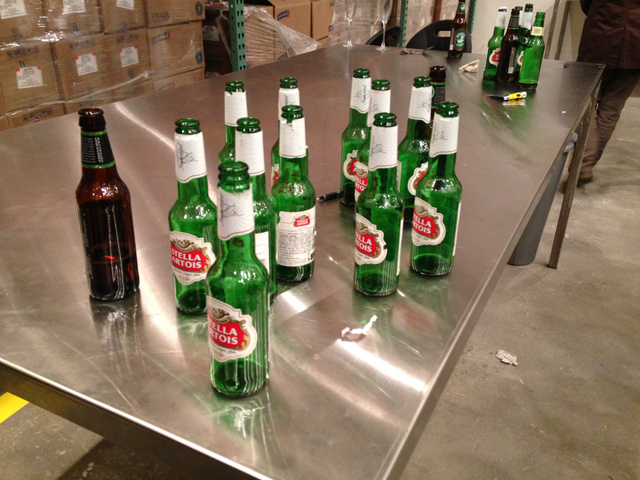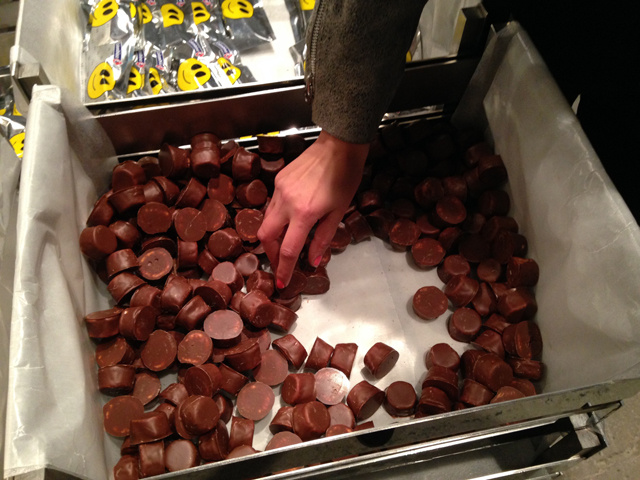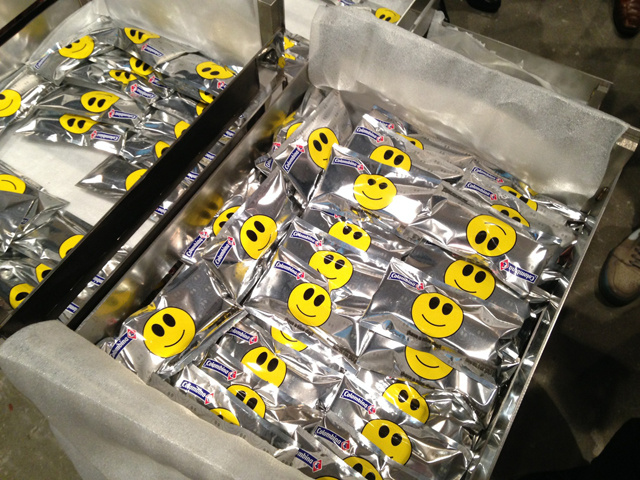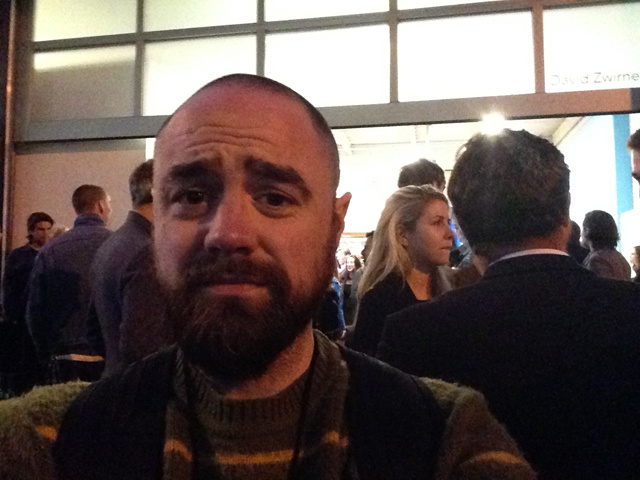![]()
In what must be the greatest punchline to the end of a four-year joke, Jón Gnarr's satirical and controversial reign as as the mayor of Reykjavik, Iceland, has been marked with excellence, success, and even empathy.
In 2010, Gnarr—a cross-dressing poet, punk rocker, comedian, and self-described anarchist—became mayor of Reykjavik, a city of 120,000 people (in a country of only 320,000) that was on the verge of bankruptcy. He led his satirical political party, the "Best Party,” to 34.7 percent of the vote and control of the city council. They had no idea what they were doing.
The victory signaled a strong critique of the incumbent officials after the 2008 financial crisis. Their platform promised free towels in all swimming pools and a polar bear for the Reykjavik Zoo. He even declared that he wouldn't work with anyone that hadn't watched the entire series of HBO's The Wire.
I sat down with the boundlessly creative and extremely compassionate Gnarr 47 days before the end of his term to reflect on why getting in over your head can be good, the relevance of "me" in political service, politics as a medium of satire, The Matrix, Bruce Lee, and the coincidental inevitability of Texas.
![]()
VICE: What is it you're looking to do now that you've chosen not to run for a second term?
Jón Gnarr: People say that they don't believe in coincidence. I do believe in coincidence. I don't believe in God. So I have this thing with coincidences; I'm fascinated by them. I'm not really sure if I have a free will, and I don't know if my brain has made any decision about what he's going to be making me do next. But I have this strange hunch—which is very weird—that he's taking me to Texas. I've never been there. Texas, in my mind, is a bit like Mordor or something. [Laughs]
You were quoted in a 2010 New York Times profile as feeling like you were a character in a Samuel Beckett play, having an "intense moral obligation towards something you don't understand.” Do you feel any of those impulses towards Texas?
No, I don't know. It's just a series of coincidences. I'm a writer, and my books are getting translated. I have a publisher in the States, in Texas, and I have a very good friend who's a professor at Rice University. One thing that surprised me at the start of the Best Party was the international attention it caught.
So I started expressing myself in English on Facebook. And one of the first people who started following me was an attorney in Texas. It seemed so absurd that this attorney in Texas was following my story. I noticed him. I noticed his comments. And sometimes I replied because his comments were insightful and intelligent.
Then, two years ago, I was on an official trip to the Faroe Islands. I had never been there before. Suddenly, somebody called "Mayor Gnarr!" or [funny Texan accent] "Gnnnnaaarrrrrr.” "Mayor Gnarr!" It's this guy! And he didn't know I was in the Faroe Islands, and he's never been to Iceland. He said, "We have to get you to Texas. When you come to Texas we'll have to buy you a cowboy hat.”
So it's like all roads lead to Texas? Really?
![]()
A Jón Gnarr doll, leaning on wisdom
Has living intuitively by being an anarchist and getting into office offered you a more well-rounded perspective that other people may not have had?
Yes, absolutely. People assume, and people have their opinions. To me, no man is my enemy. I have no enemies, but I have many people who see me as an enemy, or a threat. It was kind of like in the scene [in The Matrix] with Neo and Morpheus with the pills. Its was kind of like I took the red pill, and I have sometimes thought I should have taken the blue pill. Because I had to get out of my comfort zone. I like to think of myself as this wanderer and a hobo, kind of. I just wander. When I get tired or bored, I just leave. But here I was kind of stuck. It came with all this responsibility, and the financial situation of the city was so serious. We said in the beginning before the elections that if it sucks, [the Best Party] will just leave. But then we realized, we can't leave.
Sarah Palin left Alaska.
[Laughs] Sarah Palin left. No, but I mean, it was just too much responsibility. I wouldn't have a care in the world if I didn't have children. Children bring responsibility, and they fuck everything up. You're a dedicated anarchist, anti-consumerist, anti-capitalist Noam Chomsky type, and now you're in Toys"R"Us all the time. You know, "Can we go to McDonald's? Can we please go to McDonald's?" So you go there.
You saw that sort of seriousness, that obligation you get from having a child in this situation?
Yeah, absolutely. Like I said, I'm not sure if I believe in free will. To the greatest extent, I see myself as more or less a biological machine mostly following instincts and desires. On the other hand there is some kind of collective responsibility—like being part of a community.
I was born in Iceland, and I speak the language. I know my way around the city, and by definition I'm Icelandic. In my opinion this country—for most of my life—has rejected me as a person with any value. But still I felt an obligation and a responsibility towards the city. I was a pawn, or maybe more than a pawn—like a knight on a chessboard and I had to finish the game. We had to finish it. We cannot just leave.
I demanded that I wouldn't work with anyone who hadn't watched all episodes of The Wire. And it was just like, “Will they take that seriously? Will they watch it, and prepare themselves for Q and A?”
Just the idea of empathy, morality, and fun playing an essential role in politics just as notions alone seem to me to be satirical when bringing them into politics. Just the idea of being earnestly and candidly empathetic, moral, and fun is enough.
I don't think I can explain it. I don't think I have and explanation. Other than I just do what I do. It's kind of like an intervention into a dysfunctional situation. In a way, I wanted to help sort everything out. So I've really tried hard to teach non-violent communication. And I have used many of the things I have done for human right from my own fulfillment and amusement. And it has not been difficult for me. It's been more of a release.
So, do you think that approach is enough?
For me?
Yeah.
Yes. The thing is, I like people. I just really like them. [Laughs] People are a bit like computers. Like a computer geek loves computers, I really love people. If there's something wrong with people and they're threatening me, there's probably something wrong with the hardware in them, or they have a virus or something.
It was an experiment to me. Can you step into a hostile environment? I'm really inspired by Bruce Lee. I love the man, his story, and how he became. He stepped into a very hostile environment as an Asian in America at the time—not just [with white people] but also in the Chinese community. They accused him of teaching kung fu to the non-Chinese, and he was looked down on in many ways. But he managed to prove himself, and he became a superstar.
![]()
His honor, the mayor, with Yoko Ono
It's almost like the measure of the challenge dictates the amount of success that can be achieved.
Yeah, maybe. I've mostly been around people who agree with me most of my life. We usually agree on everything. We have similar values and everything. For me, it was a challenge to step into a completely different world where I knew I'd be met with hostility. I didn't know how much hostility. I underestimated it. I didn't realize they could be so brutal.
It's easy being a pacifist in Iceland. [Laughs] It's very easy being an anarchist. Someone said an anarchist is someone who criticizes society from the security of his own home. And my view is, Why can't we all just get along?
How do you reconcile that when in the political sphere there are people whose entire philosophy is to be in conflict? Is that conflict the way to resolution? How do you approach a person like that?
I've used humor a lot and played down my intelligence because it’s easy to convince people that you are stupider and less informed than they are in some matters. So I've used humor a lot. When I'm really frustrated and confused I play out my confusion, and that has been very interesting, because the whole theory of politics and political debate is logical, so when you manage to manipulate the logic it becomes illogical. And it doesn't need much—just a twist and suddenly logic is illogical because people think they are logical but they're not.
Sometimes I get really angry at people because they're rude or just violent towards me or somebody else. And I have thoughts like, Who the fuck do you think you are? You're nothing but a used car salesman judging me. I have these thoughts, but I know that if I put them into words, it will lead in a direction I don't want to go. So I experiment with something else. I experiment with empathy and humility. It's part of trying to understand humans and myself in relation to other humans.
I've learned a lot about language and how to use it, because so much depends on language. Like, for instance, we had one of the city council minority members, one of the conservatives who are quite liberal here but also strict on Christian values— one of the representatives mentioned me in a speech, saying that I was doing a bad job as a mayor and that the city had a clown for a mayor and that we should all be ashamed of ourselves.
Of course, I was angry, so I went up and I said, "Yeah, yeah, very interesting ideas that you expressed, and especially your ideas about me. What I found most interesting was what you said about me. Mostly because I am me. I didn't hear much of the other things you mentioned. But I must say, I don't agree with you. I think I'm a great mayor. I don't think we should be ashamed. I think we should be proud. I think we should be proud of me. I am proud of me."
So it's abstract. And like saying that to his face. "I like me. There are not many of me. There is only one of me. And I'm stuck with me. So I have to like me. If you don't like me there isn't much I can do about it. If you don't like me is there something you'd like me to change about me?" I asked directly, "Do you want me to change me? And if so can I do the same to you? Would you be willing, for this experiment that we're doing, to change yourself into something I would come up with?" But now we're actually discussing self. And I have unlimited time [laughs], and I can talk for hours and hours. So they have learned to avoid mentioning me [laughs].
![]()
Gnarr with the author
I don't think you could be an American politician.
[Laughs] No, no, no but the financial situation of Reykjavik when we got elected was equivalent to Detroit's. Reykjavik could have easily gone into bankruptcy. In this microcommunity, there's one [major] city, so we can't afford to have our only city…
Be Detroit.
Exactly. We cannot afford it. That's where responsibility kicked in. I try to make the debate philosophical, because what people believe is logical is oftentimes not. I'll hear stuff like, "We will never…" So what is never? It is eternity. We're here in the city council, and we're discussing eternity. So what is eternity? For many people, it's a place or situation with endless time. To others, it’s a state where time does not exist. Now we're talking time. We're almost talking Einstein here. This is how I keep myself alive in the city council debates [Laughs].
There really is a level of absurdity to the way people frame these debates.
“It's never gonna happen.” Yeah, wow, that's amazing. How do you know that? It's not that complicated. Some of it has value, and some of it is just bullshit. I consider myself to be an atheist. But I have nothing against religion, unless it gets out of hand. Like if you compare religion to sex. Sex is probably one the few reasons we are alive. It's actually the main reason why we are alive.
It’s certainly why we're alive.
But that doesn't mean I approve of rape.
Right. Religion can be its own thing, but when it crosses a line, and becomes abhorrent or makes something abhorrent, is when you'd have a problem with it.
For instance, there's a heated debate now on religion because the first mosque is being built. I noticed it's mostly fundamentalist Christian people who are opposed to the mosque. They have a certain image of Islam, but some of them can't distinguish between Muhammad and Allah.
It's easy to be confused about something when you know nothing about it.
That's actually the best way to confuse things. So I had this thought yesterday: What am I gonna do once I'm out of office? Will I stay here? Do I have an obligation? Should I travel the world? I have an eight-year-old son who loves to travel. He's obsessed with amphibians and lizards. They're banned here because it's an island. I have no idea what I'm gonna do.
But that brings us back to the woman in the bathroom and when you had no idea what you were going to do four years ago.
Yeah. You know I'm libertarian.
You're sounding like a Texan.
Yeah, I'm going to be riding a horse in Southfork. That's something I think is very important.
James Shaughnessy is a Los Angeles–based commercial and documentary filmmaker. His last feature, Technopolis Now—a look at the internet, the Singularity, and the rise of hactivist culture—was released in 2012.































































